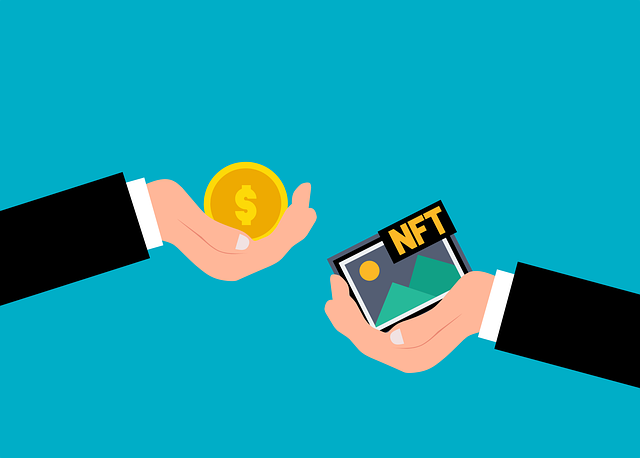In 2021, a revolutionary form of art and investment took the world by storm with the historic sale of Beeple’s Everydays: the First 5000 Days NFT, fetching a staggering $69 million at Christie’s auction. However, what many people may not know is that NFTs have a longer history predating this landmark event. While 2021 marked the year of the NFT’s meteoric rise in popularity, it was not the year of their inception.
To truly grasp the concept of NFTs and gain a comprehensive understanding of what they entail, it is essential to delve into the history of non-fungible tokens and the events that propelled them into the mainstream spotlight in recent years.
Click this link if you’d like to read more about NFTs.
What Exactly Are Non-Fungible Tokens (NFTs)?
Non-fungible tokens, commonly known as NFTs, can represent ownership of virtually anything, ranging from digital art to virtual real estate. In the digital asset space, it has often been challenging to establish ownership rights. However, the introduction of NFTs has made the process of demonstrating ownership more secure and convenient.
Unlike cryptocurrencies such as Bitcoin or traditional fiat currencies like USD, NFTs are non-fungible because each token is unique and possesses its own distinct value.
An In-Depth Look into NFT History
2012-2016: The Early History of NFTs
Long before Ethereum came into existence, the conceptual foundation of NFTs had already been laid. In 2012, Meni Rosenfield published a paper introducing the idea of “Colored Coins” on the Bitcoin blockchain. Colored Coins aimed to represent and manage real-world assets on the blockchain, offering a means to prove ownership of these assets. Similar to regular Bitcoins, Colored Coins possessed an added “token” element that conferred uniqueness and defined their utility.
Despite the limitations of Bitcoin, which prevented the full realization of the Colored Coins concept, these early experiments laid the groundwork for the subsequent invention of NFTs.
On May 3rd, 2014, digital artist Kevin McCoy minted the first-known NFT, named “Quantum,” on the Namecoin blockchain. Quantum is a mesmerizing digital image of a pixelated octagon that dynamically changes colour and pulsates, reminiscent of an octopus’s movements.
Following these pioneering moments, extensive experimentation and development took place, leading to the emergence of platforms built on top of the Bitcoin blockchain. Simultaneously, the Ethereum blockchain began to establish its dominance in the realm of NFTs.
Counterparty, a Bitcoin 2.0 platform, gained traction as it enabled the creation of digital assets. Spells of Genesis soon followed in the footsteps of Counterparty, spearheading the issuance of in-game assets.
In 2016, a new trend emerged as memes were transformed into NFTs on the Counterparty platform. The year witnessed the release of a collection of Rare Pepes NFTs, marking a notable milestone in the history of NFTs. However, it became increasingly clear that the Bitcoin blockchain was not designed to serve as a database for tokens representing asset ownership. This realization prompted the eventual transition of NFTs to the Ethereum blockchain.
2017-2020: NFTs Go Mainstream
The shift to Ethereum as the primary blockchain for NFTs gained further momentum with the introduction of token standards. These standards enabled developers to create and issue tokens in alignment with the underlying blockchain technology. Token standards acted as an extension of smart contract standards, providing guidelines for developers to create, issue, and deploy new tokens.
Taking inspiration from the success of Rare Pepes, software developers John Watkinson and Matt Hall introduced their generative series of NFTs, known as CryptoPunks, on the Ethereum blockchain. CryptoPunks, considered some of the earliest NFTs, were initially offered for free. Limited to 10,000 unique characters, each with its distinct features, CryptoPunks drew inspiration from London punk culture and the cyberpunk movement.
During a significant hackathon for the Ethereum ecosystem, Axiom Zen, a venture studio based in Vancouver, unveiled CryptoKitties. This virtual game, built on the Ethereum blockchain, allowed players to adopt, breed, and trade virtual cats stored in crypto wallets. The game swiftly gained viral popularity, leading to congestion on the Ethereum blockchain and astonishing profits for some participants.
Following the monumental success of CryptoKitties, NFT gaming gained considerable traction, capturing the attention of a broader audience. Decentraland, a decentralized virtual reality (VR) platform on Ethereum, emerged as a pioneering project in the NFT gaming and metaverse space. Decentraland offered an open-world gaming platform where players could explore, play games, build virtual assets, and more. Everything obtained or built in Decentraland belonged to the players on the blockchain.
Soon after, other platforms and games utilizing Enjin Coin (ENJ) emerged, allowing developers to tokenize in-game items on Ethereum, giving these items real-world value. Axie Infinity (AXS), a blockchain-based trade and battle game partially owned and operated by its players, also gained prominence during this period.
2021: The Year of the NFT
In 2021, NFTs experienced an explosive surge in supply and demand, solidifying it as the year of the NFT. One of the primary catalysts for this boom was the transformative changes within the art market and the industry as a whole. Prominent auction houses like Christie’s and Sotheby’s not only moved their auctions online but also began selling NFT art.
Christie’s record-breaking sale of Beeple’s Everydays: the First 5000 Days NFT for $69 million served as a pivotal moment, firmly establishing the credibility and significance of NFTs within the marketplace.
The unprecedented demand for NFTs triggered other blockchains to join the movement and create their own versions of NFTs. Cardano, Solana, Tezos, and Flow were among the blockchains that embraced NFTs. These newer platforms introduced standards to ensure the authenticity and uniqueness of the digital assets created.
Toward the end of the year, when Facebook rebranded as Meta and entered the metaverse, the demand for NFTs, particularly within the metaverse, witnessed remarkable growth.
Conclusion
NFTs have come a long way since their inception, and their impact on the art world and beyond is undeniable. With their unique characteristics and transformative potential, NFTs have ushered in a new era of digital ownership and creative expression. As we venture into the future, it is essential to embrace the possibilities offered by NFTs while ensuring responsible and sustainable practices to shape a thriving ecosystem for all stakeholders involved.




